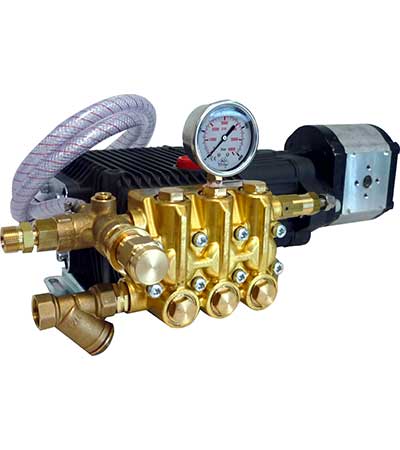Here in Australia, bushfires can strike anywhere, anytime. So, if you live in the Urban Interface or in a regional area, it’s important to make sure that you’re armed and ready to make proactive decisions when threatened by bushfires.
There are plenty of precautions you can take to give you and your family the best chances of survival and to help minimise damage to your property.
Here are our top 10 tips for preparing for a bushfire including some advice on fire-fighting equipment and safety gear:
1. Mow Your Lawn Regularly
Long grass can provide fuel for a bushfire, so make sure that your lawn is kept short. On days of high risk consider watering your lawns and garden beds as a moist vegetation will resist embers catching.
2. Cut Back Trees and Shrubs
Overgrown trees and shrubs close to buildings can also pose a risk as leaves and branches can provide as fuel. Clear out leaf debris from your gutters and dispose of cuttings. On the day of the fires, fill gutters with water to help prevent embers from entering your roof cavity.
3. Choose the Right Fire Fighting Pump
If you have a suitable water source like a large storage tank, dam or swimming pool then a reliable engine drive firefighting pump gives you the option to stay and defend your home. This is essential if you’re living in remote areas where access roads may be cut before you have a chance to evacuate.
Aussie Pump Distributors can help you to choose a suitable fire pump to suit your unique site application. It also pays to train everyone in the household how to set up and use the pump. Frequent practice will reduce the stress on the day.
4. Put Together an Emergency Kit
Your bushfire emergency kit should contain a wide variety of tools and materials, as well as essentials that you and your family may need to survive if you need to escape your home. Although your bushfire emergency kit will be unique according to you and your family’s needs, some of the most common items to take include food, water, a first-aid kit, medication, a battery powered radio, flashlight, pet food (if you have pets), fire blankets and important documents (which you can scan onto a USB drive or store in your mobile phone).
5. Move Flammable Items Away
Got flammable items stored on your property? Fuel, gas bottles, wood piles, doormats and outdoor furniture should all be moved away from the exterior of your home so that you can minimise the risks of them becoming fuel for a bushfire.
6. Install Sprinklers
A sprinkler system on your roof will assist in wetting down buildings and surrounding garden quickly during an emergency. It will leave you free to tackle spot fires and to respond to other issues on the day.
Don’t rely on mains water as the pressure will often drop significantly due to local demand. You’ll need an engine drive pump capable of delivering sufficient water to the system with extra capacity for additional connections for hand held hoses. Talk to your local Aussie Pump Distributor about your plans as you may require more than one pump.
7. Have Protective Clothing on Hand
Bear in mind that the radiant heat given off by bushfires is one of the leading causes of injuries. It’s important to make sure that you cover up when the threat of a bushfire is nearby. Wear clothes made from natural fibres like cotton or wool . Long-sleeved shirts, trousers, hats, leather gloves and sturdy boots are perfect examples of protective clothing you can wear. Goggles and respiratory face masks are also worth the investment.
8. Stay Hydrated
It’s important to keep everyone hydrated. Make sure that you’re splashing your face with cool water and drinking regularly, even when you aren’t thirsty.
9. Install Security Screens
There are available security screens specifically designed for properties in bushfire-prone areas. Manufactured out of stainless steel, they assist in preventing embers from entering buildings, especially as glass windows can sometimes implode during a bushfire.
10. Know When to Leave
The last thing that many of us would want to do is leave our homes when the threat of a bushfire arrives. However, no matter how badly we want to stay and protect our homes, sometimes, the safest option is to leave; especially when the fire danger rating is catastrophic, or your property has not been fully prepared for bushfires. If you want to ensure the safety of you and your family members, you have to know when to leave early. Once the threat has passed, you can return back to your home.
For further information check out the Aussie Bushfire Survival Guide …. click here





